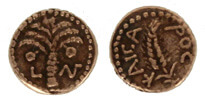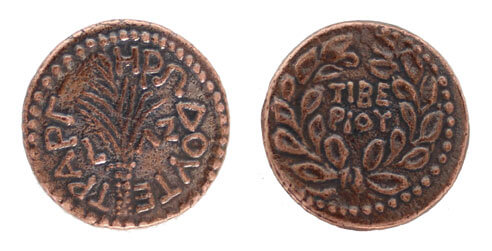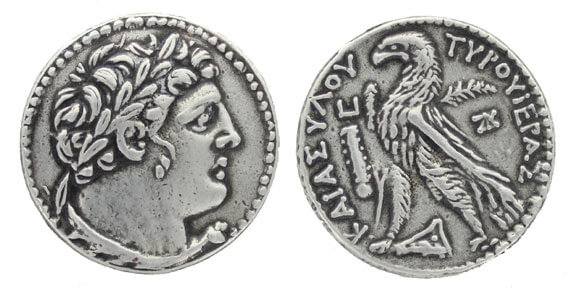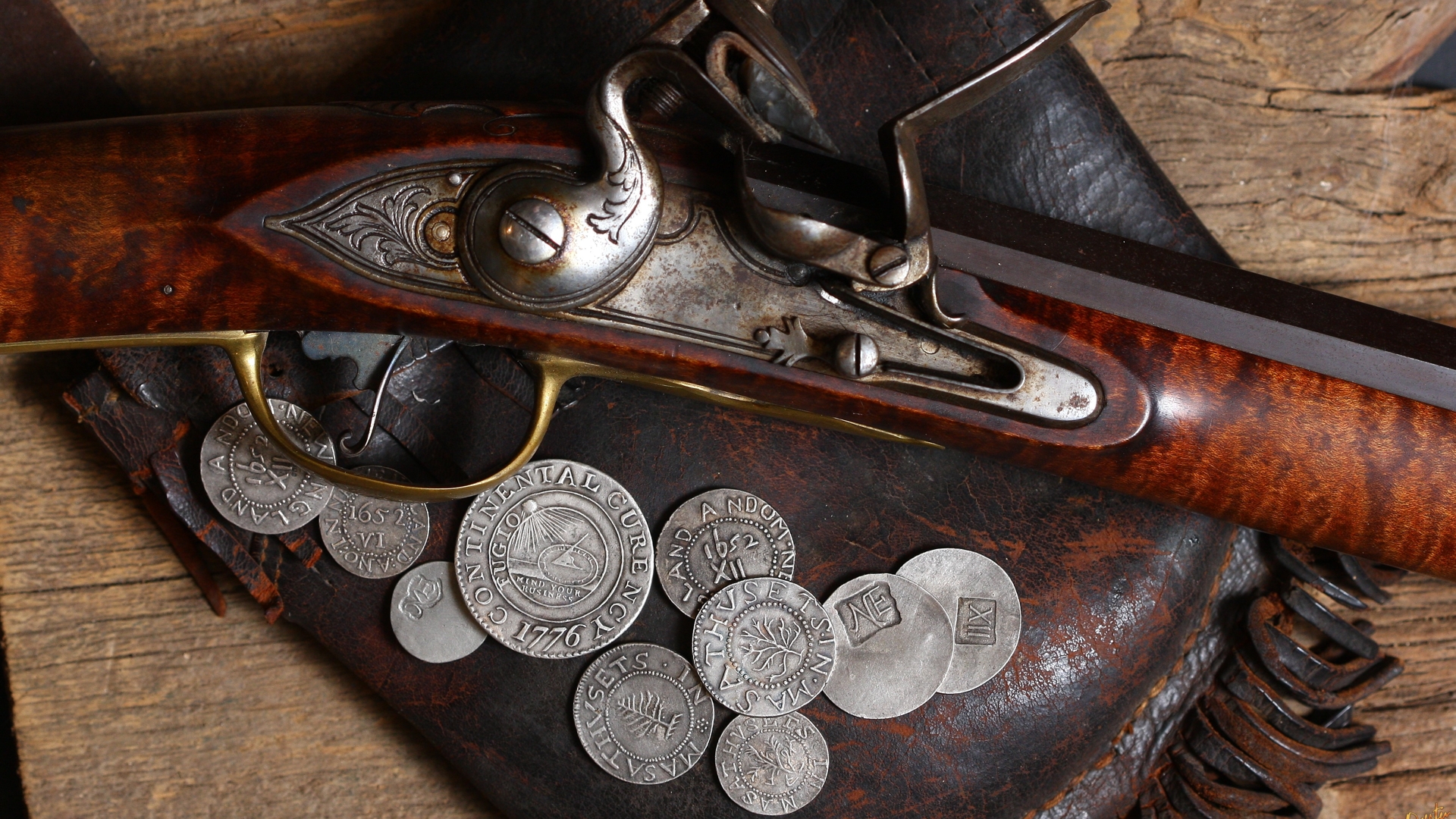Coins in circulation in the Holy Land during Jesus’ life.
HEROD I (THE GREAT), 37 – 4 BC Æ “Eight Prutot”
In 37 B.C. King Herod the Great was placed on the throne of Judaea by the Romans. Herod and his successors issued only bronze coins.
On this coin: obverse a tripod with a ceremonial bowl on top and the legend reads ‘of King Herod’. On the reverse is a helmet with cheekpieces.
When Herod heard of the birth of Jesus was troubled. Herod then ordered the slaughter of all male children up to two years of age.
Matthew 2:16-18 – And sent forth and slew all the children that were in Bethlehem and in all the coasts thereof, from two years old and under, according to the time which he had diligently inquired of the wise men.
The Lord appeared to Joseph in a dream saying, Arise and take the young child and his mother, and flee into Egypt for Herod will seek the young child to destroy him. Joseph and Mary fled to Egypt to save the life of Jesus and remained there until Herod died.
Tiberius Denarius – Biblical Tribute Penny 14-37 AD
The denarius of Tiberius with Pax reverse is commonly known as the ‘Tribute Penny’, the coin to which Jesus referred to when he was discussing paying taxes to the Romans and said “render on to Caesar the things that are Caesar’s and to God the things that are God’s” (Mark 12:17). Although there are two other reverse types on denarii of Tiberius, they were only issued during the first two years of his reign, while the Pax reverse was employed throughout the remainder, making it the more likely coin referred to. The term ‘penny’ is from the 1611 King James translation of the Bible, and was adopted since the penny was the standard denomination of King James’ time.
Coponius Bronze Prutah 6 A.D.
This coin circulated while Judaea was ruled by procurators or prefects appointed by Augustus. The obverse features an ear of barley curved to right with the Greek inscription KAIPOC (Caesar). The reverse features a palm tree bearing two bunches of dates.
The most famous Biblical reference to this coin is the story of the widow’s mite:
Jesus said, “I tell you the truth, this poor widow put more into the treasury than all the others. For all of them have contributed out of their abundance; but she out of her poverty has put in everything she had, all she had to live on.” (Mark 12:41
Herod Antipas, 4 B.C.E.-39 C.E. Medium Bronze
Herod Antipas, 4 B.C.-40 A.D. Medium Bronze Prutah 6 A.D. minted at Tiberias Bronze Prutah Antipas known as the tetrarch, was the son of Herod the Great. He was mentioned frequently in the gospel narrative. Herod Antipas was called “that fox” by Jesus, he ordered the execution of John the Baptist at the behest of his wife, Herodias, after her daughter by an earlier marriage, Salome, had pleased Antipas with a dance.
Luke 13:32 – And he said unto them, Go ye, and tell that Fox, behold I cast out devils, and I do cures today and tomorrow, and the third day I shall be perfected.
His coins are RARE. Struck at the mint of Tiberias.
Phoenicia Silver Shekel of Tyre
This is the coin believed to be part of the 30 pieces of silver given to Judas to betray Jesus.
The original coins were struck in Syria and was in general circulation during the life of Christ. Also believed to be the shekel from the fish’s mouth that was enough to pay the temple tax for both Jesus and Peter.
Obverse: Laureate bust of Melkart
Reverse: Eagle standing left on prow holding palm
Matthew 26:14-15 “Then one of the 12, called Judas Iscariot, went unto the chief priests, and said unto them, ‘What will ye give me, and I will deliver him unto you?’ And they covenanted with him for 30 pieces of silver.”.
Pontius Pilate AE Prutah
Pontius Pilate, AE Prutah, minted in 29A.D. during Christ’s final year of ministry.
He was the most famous of the Roman Procurators in Judaea, he ruled under Tiberius during the trial and crucifixion of Jesus on April 17, 30 A.D.
Obverse: Three bound ears of barley, outer two ears droop; surrounded by the inscription ( IOYAIA KAICAPOC).
Reverse: Libation ladle (simpulum) surrounded by the inscription, TIBEPIOY KAICAPOC (of Tiberius Caesar) and date LIS (Year 16 = 29 A.D.).
John 18:28 – 19:42 – Pilate then went out unto them, and said, What accusation bring ye against the man?…







